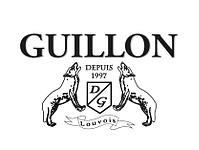No products
Product successfully added to your shopping cart
There are 0 items in your cart. There is 1 item in your cart.
The production of Guillon spirits
Malt
First of all, the barley grains must be moistened and brought to the right temperature so that germination can take place. Whether barley grains or grains of other cereals, the sugar reserve is in the form of starch (large sugar molecules) which cannot be fermented by yeast because the size of this molecule is too large to pass through the wall of the yeast.
Thus, it is necessary to carry out what is called enzymatic hydrolysis in order to break this large starch molecule and produce sugar in the form of saccharose, glucose and fructose which will be transformed into alcohol by the yeasts. This hydrolysis is a natural phenomenon that is also used to produce beers.
Why malt ?
Whether it is wheat or barley malt, it is rich in enzymes because to carry out the germination phenomenon, the grain must produce enzymes (amylases and others) in order to transform starch into sugar and to be able to supply the germ for its growth. When germination is sufficient, it is stopped so as not to reduce the grain's potential alcohol reserve too much. The maltster carries out what is known as « tourraillage ». This involves breaking the germ while drying the malt grain. When you want to obtain peaty malt, you just have to consume peat which, due to its low caloric yield (peat has only about 60% carbon), will produce more smoke than heat.
The peated malt thus produced will have a characteristic smoky odour and taste, more or less iodised if it is sea peat. On some Scottish islands, it is also common to add crushed shellfish to the peat, which will give the malt a tar-like aroma.
Hydrolysis
For this, we take more or less peaty malt, which we grind roughly with a mill. This malt will be hydrolysed by slowly adding hot water to the flour, with stirring for about 4 hours. This natural phenomenon will turn the floury liquid into a very sweet malt syrup. After this period, we take the beer wort which has a titre of about 5 to 6%vol. and we will ferment it. The malt remains that are not in solution are used as animal feed, the malt is very rich in proteins.
The fermentation
During fermentation, the temperature and oxidation of the malt wort must be controlled. Fermentation lasts approximately 3 weeks at 20°C. During this fermentation, it is important to check that it is going well, without any deviation due to bacteria. As soon as the fermentation is finished, the malt wort or beer is distilled. To carry out the fermentations, we use champagne yeasts for foaming, which gives even more regional character to our products. These yeasts are saccharomyces bayanus.
Each variety of yeast, which are the equivalent of fungi and not bacteria, brings its own aromatic characteristics. Thus, during the synthesis of alcohol (ethanol), there are also different parallel syntheses for phenolic compounds, aldehydes, other alcohols supporting the aromas, as well as esters and other highly volatile compounds. Some of these products, which exist in all fermentations, have to be eliminated during distillation, as their concentration after both distillations is not favourable to quality. This will be done during the separation of the different parts of the distillate.
Distillation
Our stills are equipped with indirect heating systems by means of a water bath, one of them is made by German craftsmen. We produce Esprit du Malt de la Montagne de Reims by double distillation. The first pass is at about 15-20%vol. and the second at 70%vol. When the distillate is passed through again, we separate the three parts which are the head or beginning of the distillate, the heating core and finally the tail.
As in every distillery, the method of separating these different parts remains the know-how of the master distiller and is therefore a particularly well-kept secret. The whole process takes place under seal, under customs control. The distillation heads and tails will be eliminated. Only the heart will continue its production cycle with ageing in oak barrels. This will give it its complexity and aromas as well as its colour, because before being stored in casks, the malt brandy is still colourless.
Our production method allows us to obtain alcohols that are both powerful and fine - long on the palate, delicate and complex.
Maturation
After ageing for several years in white Burgundy barrels, the Esprit du Malt de la Montagne de Reims is matured in finishing barrels for 6 to 8 months. The wine previously matured in the cask penetrates the wood to a depth of 3 to 4 mm while the alcohol, stored at 65° and very fluid, penetrates up to 8 or 9 mm. As it passes through, it captures the aromas, colour and taste of the wine as well as the toasting of the barrel.
Stored in non-insulated containers, the barrels are exposed to significant variations in temperature (+45°C/-15°C) and hygrometry which favour an exceptional concentration of aromas through a particularly rapid ageing process and consequent evaporation (the "angels' share" is around 5% per year). A scrupulous blending of different barrels with the same finish results in a product of great consistency in terms of smell and taste as well as the appearance of the product).
Dilution and bottling
After a more or less long ageing period, we take the alcohol out of the oak barrels and dilute it with our spring water, to bring it to 40%, 43% or 46% vol. depending on the product, before bottling.

